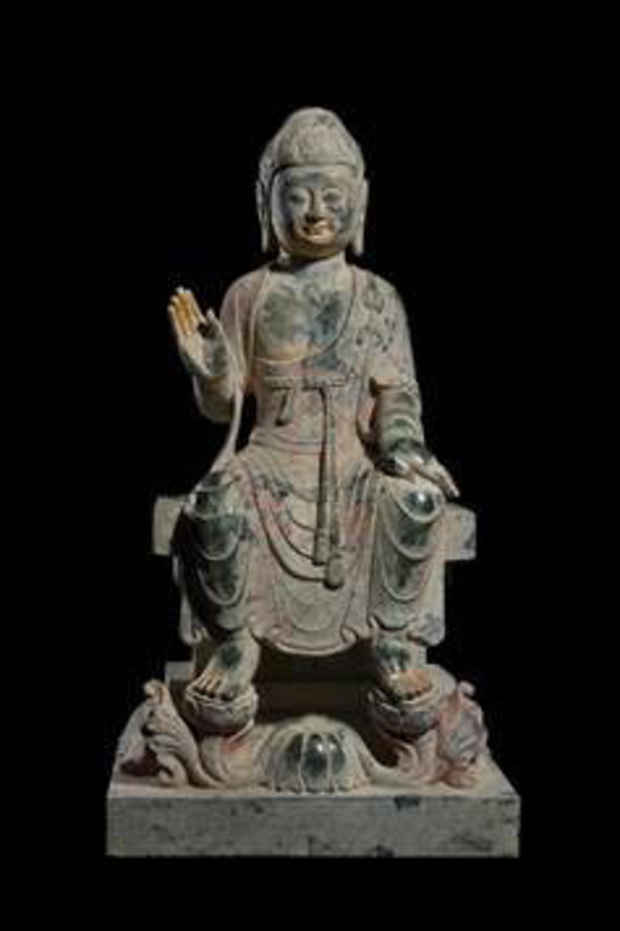“Sui to Tang, A Golden Age of Chinese Buddhist Sculpture” Exhibition
Throckmorton Fine Art

This event has ended.
From the ESSAY “A Fusion of Indian and Han-Chinese Styles: Buddhist Images from Sui to Tang Dynasties, Sixth-Ninth Centuries”
By Chang Qing
The development of Chinese Buddhist sculpture corresponds with the transmission of Buddhism from Central Asia and India, following the Silk Road. Through the exchange of monks going from India and Central Asia to China, and back from China to India, through Central Asia, not only scriptures were brought to China, but the art in the form of small portable sculptures and other objects. This Western artistic style was transformed by the Chinese artists into a local and distinctly Chinese expression. Chinese monks traveled to India, in search of authentic Buddhist dharma and canonical writings, and along with those brought back Buddhist images. The local Chinese Buddhists and artists created many artistic works for the practices of devotees, developing distinct period styles during the succeeding dynasties over the nearly two thousand years following Buddhism’s first introduction to China in the Eastern Han Dynasty (25-206 CE).
In the early phase of this artistic development, from the 2nd to 7th Centuries A.D., the Chinese Buddhist artists followed Gandharan and Gupta (ca. 320-550 CE) styles from India. However Buddhism was a foreign religion to the Chinese and the artistic styles from India and Central Asia did not match the aesthetic tastes of the local culture, therefore the Buddhist monks tried to make Buddhism more relatable in order to attract more people to the religion. For this purpose, based on Buddhist sutras, monks and artists created new indigenous forms and styles of images based on the artistic styles coming from India and Central Asia. This phenomenon is called the Sinicization of Buddhist art, and later Chinese artists kept adding indigenous elements. Buddhism became settled in China, and Buddhist art became closely tied to Chinese native cultures, beliefs, and artistic forms. The period of Sui (581-618) and Tang (618-907) Dynasties was the peak of the development of Buddhist art in China.
Media
Schedule
from March 01, 2018 to April 28, 2018